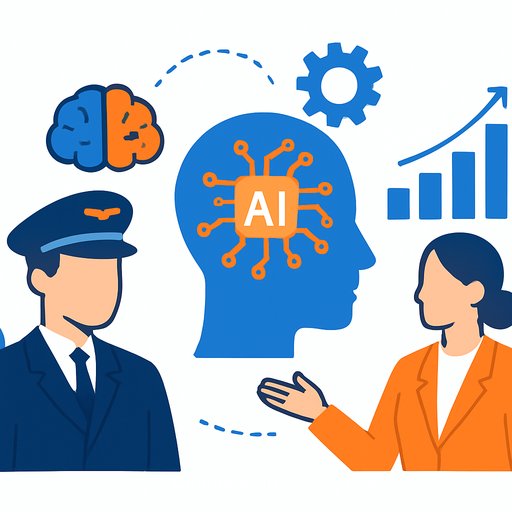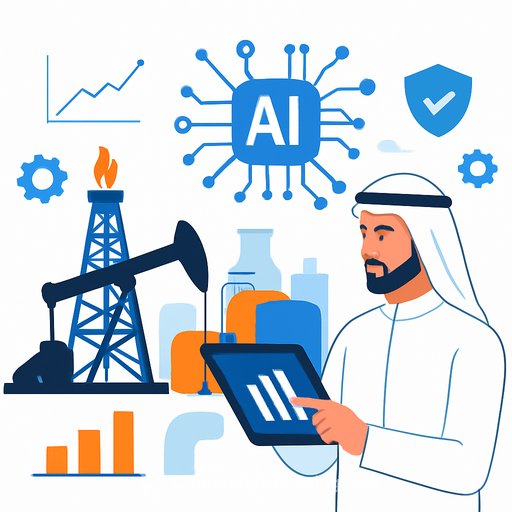AI Is Easy to Pilot, Hard to Scale
Most teams can spin up an AI demo in a week. Scaling that demo across products, functions, and regions is where progress stalls.
Leaders are learning a simple rule: AI is simple to try and hard to scale. That's why they look for partners with delivery discipline, strong governance, and battle-tested playbooks.
What AI Changes: Work, Workforce, Workbench
- Work: Processes get redesigned. AI takes on repeatable tasks and decision support, while humans move to exceptions, judgment, and outcomes.
- Workforce: Roles shift. You will see an upskilling agenda and a talent rotation. Some people move into new roles; some roles phase out.
- Workbench: The tools are different. Agents, copilots, and model-enabled apps become standard across every function.
The clear goal: rewire how work gets done so people are augmented, quality improves, and time to value shortens.
A Practical Blueprint for Leaders
- Start with use cases tied to value. Commit to a small portfolio you can ship in 90 days.
- Build the workflow first, then the model. Process design beats model tuning.
- Stand up a product-aligned AI platform. Shared data, model registry, agent controls, and observability.
- Fund upskilling as a program, not a perk. Treat skills as a balance sheet item.
- Plan the talent rotation. Be honest about the roles that change and create pathways for people.
- Embed responsible AI from day one. Policy, controls, testing, and audit trails baked into delivery.
Skills That Matter Now
Two dimensions work together: clarity on which skills the business needs as tech evolves, and a broad view that goes beyond model know-how.
- Technical fluency: data literacy, prompt design, agent patterns, evaluation, and monitoring.
- Human strengths: communication, product thinking, change leadership, and ethical judgment.
Update the skills map quarterly. Keep it practical and role-based. Platforms like LearnVantage show how to scale this thinking across large teams.
If you need a fast start, see role-based learning paths here: AI courses by job and a curated set of certifications here: popular AI certifications.
Responsible AI Is the Foundation for Scale
Trust drives adoption. Without it, pilots stall. With it, AI moves into core processes.
Responsible AI must be embedded in every delivery step-use-case selection, data sourcing, model choice, testing, deployment, and monitoring. Frameworks like the NIST AI Risk Management Framework provide a strong baseline.
A Concrete Example
Compliance policies change. Most enterprises can update people with training. Updating every AI agent to follow the new rules is harder.
To solve that, one approach is a product layer that automatically propagates policy changes to every model and agent across the enterprise, retrains where required, and verifies behavior. It closes the gap between the behaviors you expect from people and what your digital agents actually do. HR systems were never built for this; AI needs its own control plane.
Controls You Can Implement This Quarter
- Policy-to-model pipeline: translate policies into tests and guardrails that run automatically.
- Model and agent registry: full inventory with owners, data lineage, and version history.
- Preflight evaluation: bias, toxicity, privacy, and security checks before release.
- Post-deploy monitoring: drift, PII leakage, hallucination rates, and user feedback loops.
- Incident playbook: rollback, containment, audit logs, and clear escalation.
- Human-in-the-loop: approval steps for high-risk actions and continuous sampling of outputs.
Keep Humans at the Center
Technology should serve human ingenuity, not replace it. Keep the human experience central to every design decision.
That is how you ship business value, not just cool demos.
Quick Checklist
- Pick 3-5 high-value use cases with clear owners and metrics.
- Redesign the workflow before you pick a model.
- Stand up a small, cross-functional AI delivery team.
- Publish a living skills map and fund role-based upskilling.
- Define your policy stack and wire it into CI/CD.
- Instrument every agent with monitoring and audit trails.
- Run monthly model reviews with business and risk present.
- Share wins and failures openly to keep learning velocity high.
Build trust, build skills, build systems. That's how AI moves from pilot to production-and stays there.
Your membership also unlocks:










